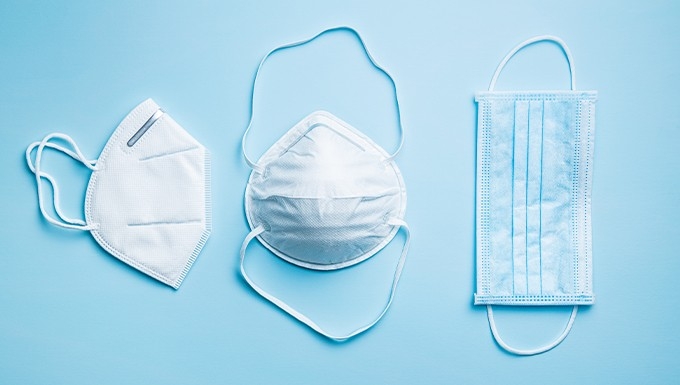COVID-19 Resource Center / Masking Information
Masking Information
Updated on 4/11/23
On April 3, 2023 the California Department of Public Health (CDPH) lifted masking mandates for healthcare workers, patients, and visitors in health care settings.
With the decline of respiratory illness cases, and in alignment with the CDPH and local counties, Stanford Health Care is also no longer requiring masks in clinical settings. However, we will continue to support masking in such spaces, especially during direct patient care. Learn more on our Visitor Policy page.
While masks are no longer required in California, it is important to check the levels in your community to determine your risk. Masks are still recommended for:
- People who have respiratory symptoms, such as a cough or runny nose
- People who are riding on indoor public transportation, such as a bus or airplane
- People who have been exposed to someone with COVID-19
Sources: CDC and COVID19.ca.gov

Frequently Asked Questions
- N95 masks are NIOSH-approved and the most effective in reducing transmission of respiratory illnesses
- KN95s and KF94s are designed to meet international standards and are also highly effective at filtering varying levels of particles
- Surgical masks that have multiple layers of non-woven materials offer good protection from particles in the air
- Cloth masks are the least effective, but are better than nothing
For more, visit the CDC.
Masks are strongly recommended and may be required when:
- Respiratory symptoms are present
- Traveling or riding on indoor public transportation
- Exposed to something with COVID-19
Learn more at COVID19.ca.gov
To put on your mask:
- Wash your hands with soap and water or use hand sanitizer, scrubbing thoroughly for at least 20 seconds.
- Grasp the mask by its ear loops to it pick up.
- Place the inside of the mask over your face, putting the loops behind your ears.
- Avoid touching the inside of the mask.
- Pinch the nose piece to fit the mask to your face.
- Wash your hands with soap and water or use hand sanitizer.
To take your mask off:
- Wash your hands with soap and water or use hand sanitizer, scrubbing thoroughly for at least 20 seconds.
- Remove the mask by holding the ear loops.
- Inspect it. If it’s dirty, torn, or wet, ask for a new one and discard the old one.
- If the mask is not visibly soiled or torn, carefully place it with outside facing the table on a paper towel.
- Wash your hands with soap and water or hand sanitizer.
If your mask gets dirty, wet, or damaged, ask your care team for a new one. Ask where you should discard your old mask.
